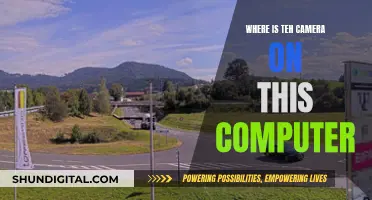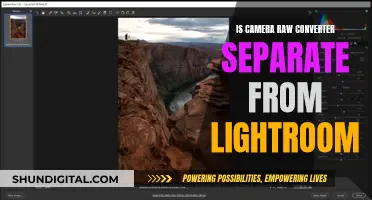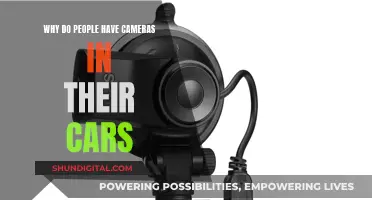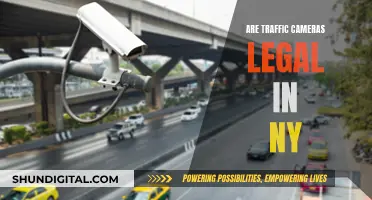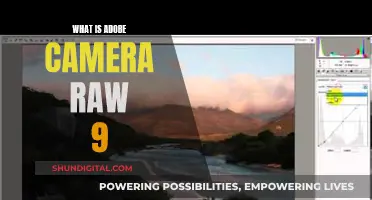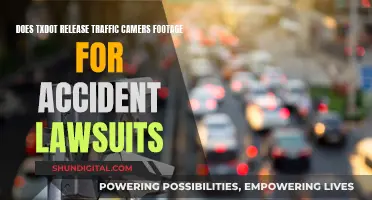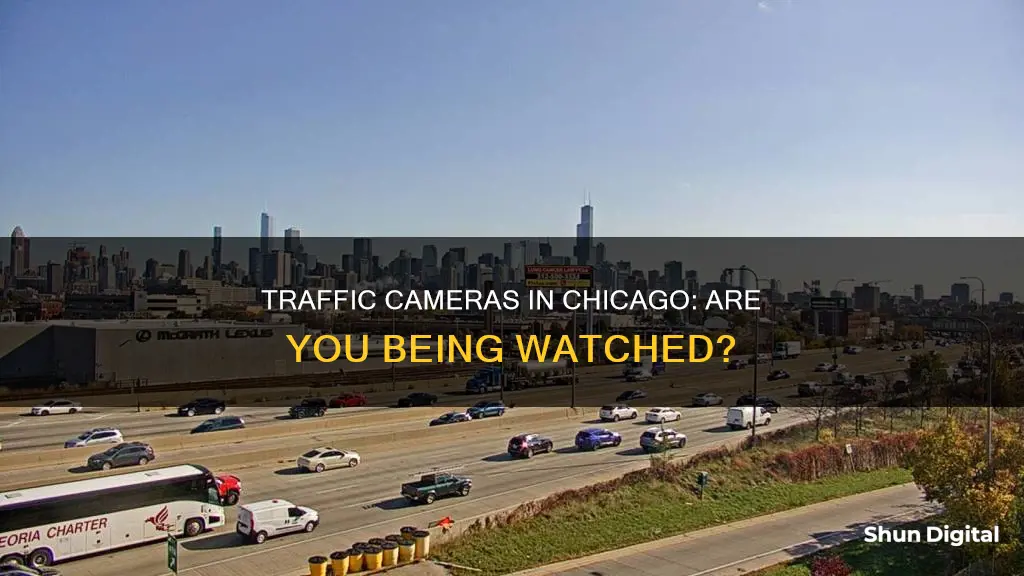
Chicago has a network of traffic cameras installed throughout the city. These include red-light cameras, speed cameras, and 24/7 webcams that monitor traffic flow. The city's Department of Finance is responsible for managing the revenue collected from traffic violations, including those captured by the camera systems. The implementation of these cameras aims to improve road safety, particularly at intersections, by reducing dangerous crashes and encouraging drivers to obey traffic signals. Chicago residents and visitors can access footage from these cameras through the City of Chicago website, which provides information on ticket payments, viewing photos and videos, and locating camera positions.
| Characteristics | Values |
|---|---|
| Purpose | To increase safety on Chicago streets by reducing the most dangerous types of crashes at the most dangerous places on the streets, namely intersections. |
| Types of cameras | Red light cameras, speed cameras |
| Camera locations | A map of camera locations can be found on the official website of the City of Chicago. |
| First operational date | Available |
| Approaches | The direction of travel monitored by the camera |
| Camera feeds | Available for viewing on the City of Chicago website |
| Camera footage availability | 24-hour streaming video from red light cameras is available for 30 days, while red-light violation footage can be viewed for up to two years. |
What You'll Learn

Chicago's Red Light Camera Enforcement Program
The program was first implemented in 2003, with enforcement at just two intersections: Peterson and Western, and 55th and Western. Since then, additional intersections have been added based on crash frequency, severity, and community input. As of January 2021, there are 149 intersections with red-light cameras in Chicago.
The red-light cameras are integrated with the traffic signal system and use 3D radar technology to detect vehicles approaching the intersection. When a vehicle enters the intersection after the signal has turned red, the cameras capture still photographs and video footage, including the rear license plate. These images are reviewed by the camera equipment vendor and the City's Department of Revenue to verify violations and issue tickets.
The effectiveness of the program has been studied by Northwestern University's Transportation Center, which published a report titled "Chicago Red Light Camera Enforcement: Best Practices & Program Roadmap." The study found that dangerous angle crashes, also known as "T-bone" crashes, were reduced to approximately 55% of the yearly total before the camera was installed. Overall, between 2005 and 2022, crashes of all types decreased at intersections with red-light cameras, and overall safety improved.
The City of Chicago takes the program seriously, and failure to pay a ticket can result in consequences such as doubled fines, vehicle impoundment, and suspension of one's driver's license by the Illinois Secretary of State.
Spyware: Seeing Through Others' Computer Cameras
You may want to see also

Red light camera locations
The City of Chicago has a network of red light cameras at various intersections to improve safety on its streets. The Red Light Camera Enforcement Program was designed to reduce the most dangerous types of crashes, namely angle crashes (or "T-bone" crashes), which often result in serious injuries or fatalities.
Chicago's red light camera program was initiated in 2003, with enforcement at just two intersections: Peterson and Western, and 55th and Western. Since then, the program has expanded to include 149 intersections (as of January 2021) based on crash frequency, type, and severity, as well as community input and Aldermanic support.
The locations of red light cameras are strategically determined through an analysis of crash data. Intersections with a high number or rate of right-angle crashes are prioritized for red-light camera enforcement. The cameras are integrated with the traffic signal system and use 3D radar to detect vehicles approaching the intersection.
You can view the locations of red light camera intersections on the City of Chicago's website. The website provides a map that shows the location, first operational date, and approaches of the red light cameras. Additionally, warning signs are posted on all approaches to intersections with automated red light cameras.
The Chicago Department of Finance Citation Administration Division handles citations from these cameras.
Plastic Camera Covers: Are Toyota Cars Equipped?
You may want to see also

How to access traffic camera footage
The City of Chicago has a network of traffic cameras in place to monitor intersections and enforce road safety. These cameras are primarily used to deter and capture red-light violations, but they also help reduce other dangerous types of crashes, such as angle crashes ("T-bone" crashes) and crashes involving pedestrians and bicyclists.
If you want to access footage from these traffic cameras, here is a step-by-step guide:
Identify the Type of Camera Footage:
The process for obtaining footage differs depending on the type of camera that recorded the incident. The most common types of traffic camera footage in Chicago include:
- Red light camera footage: These cameras are installed at intersections to capture vehicles running red lights.
- Speed traffic camera footage: These cameras capture speed violations and are typically located on roads with speed limits.
- City of Chicago's 24-hour streaming video: This footage is available from cameras monitoring various locations in the city.
- Chicago police observation device cameras: These are cameras installed in police vehicles or at fixed locations.
Access Red Light Camera Footage:
If you believe you have been captured by a red light camera, you can expect to receive a ticket and notice within 5 to 7 business days. To access the footage:
- Visit the City of Chicago website at www.chicagophotociteweb.com/publicinq/.
- Enter your ticket number and license plate number to view the video and/or still images of the alleged violation.
- Access Speed Traffic Camera Footage:
To access speed traffic camera footage:
- Go to violationinfo.com/Chicago/.
- Have your ticket number and license plate number ready to view photos, videos, and speed information related to the alleged violation.
- Obtain Other Types of Footage:
For footage from the City of Chicago's 24-hour streaming video or Chicago police observation device cameras, you will need to submit a Freedom of Information Act (FOIA) request. Your attorney can assist with this process if the footage is required for a legal case.
Additionally, if there were serious injuries involved, a subpoena may be required to obtain surveillance videos from businesses, parking garages, or private properties that captured the incident. Your lawyer can handle this formal request for evidence.
Act Promptly:
Remember that there is a limited time frame to contest a ticket, so it is essential to act quickly when obtaining traffic camera footage. In some cases, you may have as little as 7 days to respond.
Charging Your Canon Camera Battery: A Step-by-Step Guide
You may want to see also

Speed camera locations
Chicago has implemented a series of traffic cameras to improve safety on its roads. These include red-light cameras, which are located on the side or corner of intersections, and speed cameras, which are placed in safety zones near schools and parks.
Red-light cameras
The City of Chicago's Red Light Camera Enforcement Program was created to improve safety on the city's streets by reducing the most dangerous types of crashes, namely angle crashes (also known as "T-bone" crashes), as well as pedestrian and bicyclist crashes. The program aims to encourage drivers to obey traffic signals and reduce red-light running. As of January 2021, there are 149 intersections with red-light cameras in Chicago.
The locations of these cameras are determined by analysing crash data, with a focus on intersections that have a high number of right-angle ("T-bone") crashes, which are often the result of vehicles running red lights. The cameras are installed, removed, or relocated based on crash frequency, crash type, crash severity, community input, and Aldermanic support.
Speed cameras
There are 140 speed cameras across the city of Chicago, according to the city's Department of Transportation spokesman Michael Claffey. These cameras are placed in safety zones near schools and parks. However, it is important to note that there are 21 cameras in high school speed zones that remain shut off.
Accessing camera footage
The City of Chicago website provides access to view photos and videos from parking and speed camera violations. To access this footage, you will need your ticket number and license plate number. Additionally, you can submit a FOIA request to obtain video footage from other sources, such as the City of Chicago's 24-hour streaming video and Chicago police observation device cameras.
Residential Camera Surveillance: Privacy vs. Security
You may want to see also

Traffic camera footage uses
Chicago's Red Light Camera Enforcement Program was created to improve safety on the streets of the city by reducing the most dangerous types of crashes, such as angle crashes (also known as "T-bone" crashes), which often result in serious injuries or fatalities. The program also aims to reduce pedestrian and bicyclist crashes, which are also common at intersections.
Traffic camera footage can be used for various purposes, including:
- Evidence in Legal Proceedings: Traffic camera footage is often used as evidence in legal cases, particularly in personal injury cases arising from car accidents. It can help establish liability and provide valuable context about the events leading up to and during an accident. This evidence can be crucial in determining the at-fault party and holding them accountable, especially in cases where liability is disputed.
- Traffic Violation Enforcement: Red light cameras, for instance, capture footage of vehicles that enter intersections after the signal has turned red. This footage is then reviewed, and if a violation is confirmed, a citation is issued to the registered owner of the vehicle.
- Traffic Monitoring and Analysis: While some traffic cameras provide continuous streaming, not all of them record footage. These streams are monitored by law enforcement and other government agencies to observe traffic patterns, which can help in making informed decisions about traffic management and road safety.
- Research and Studies: Traffic camera footage can be used for research and academic purposes. For example, Northwestern University's Transportation Center studied Chicago's Red Light Camera Enforcement Program and published a report on its effectiveness and best practices.
- Public Safety: The presence of traffic cameras can act as a deterrent for dangerous driving behaviours, such as running red lights or speeding. This, in turn, can help reduce the number and severity of accidents, especially at intersections.
- Crime Investigation and Prevention: While not directly related to traffic, footage from traffic cameras can potentially capture criminal activities or incidents that occur within their field of view. This footage can assist law enforcement in investigating crimes and enhancing public safety.
It is important to note that the retention period for traffic camera footage varies depending on the jurisdiction and the specific camera system. In Chicago, 24-hour streaming video from red light cameras is available for 30 days, while red-light violation footage can be viewed for up to two years.
Eufy Camera Battery Replacement: A Step-by-Step Guide
You may want to see also
Frequently asked questions
Yes, Chicago has traffic cameras at various intersections and locations across the city. These include red-light cameras and speed cameras.
The Red Light Camera Enforcement Program was created to increase safety on Chicago streets by reducing dangerous crashes, specifically angle crashes (also known as "T-bone" crashes), which often result in serious injuries or fatalities.
You can view a map of red-light camera intersections on the City of Chicago website. As of January 2021, there were 149 intersections with red-light cameras in Chicago.
The City of Chicago website allows you to view photos and videos from parking and speed camera tickets. For red-light camera violations, you can visit www.chicagophotociteweb.com/publicinq/ to access the footage. You will need your ticket number and license plate number.


